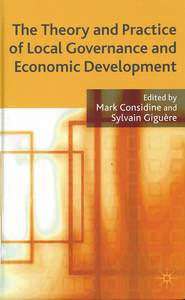Helping disadvantaged youth in education
Taylor, Pauline (2008) Helping disadvantaged youth in education. In: Considine, Mark, and Giguere, Sylvain, (eds.) The Theory and Practice of Local Governance and Economic Development. Palgrave Macmillan, Basingstoke, HARTS, UK, pp. 201-214.
![[img]](https://researchonline.jcu.edu.au/1946/2.hassmallThumbnailVersion/1946_Taylor_2008_Book_cover.jpg)
|
Image (JPEG) (Book Cover)
- Cover Image
Download (202kB) |
|
|
PDF (Published Version)
Restricted to Repository staff only |
Abstract
The Far North Queensland (FNQ) region spans a large, diverse geographical area: from small, isolated islands in the Torres Strait, across remote Aboriginal communities in Cape York, rural towns on the Atherton Tablelands and Coastal areas stretching from the Northern tip of Queensland to beyond the farming areas of Innisfail and Tully. The largest urban centre is Cairns with a growing population of over 160,000. The region incorporates the highest numbers of indigenous school students in Queensland, some of the lowest socio-economic areas in the state and the most difficult geographical areas in Australia in which to deliver a range of government services. In 2002, the Queensland Government released the White Paper Queens/and the Smart State: Edllcation and Training Reforms for tile Future (ETRF) outlining landmark education and training reforms focused on 19 actions to be implemented through partnerships between young people, parents, employers, schools, TAFE Institutes, universities and other stakeholders. The White Paper (2002) also heralded the introduction of new laws to ensure that all young people in Queensland would be earning or learning. This new legislation, the Youth Participation in Education a11d Training Act, 2003, and Training Reform Act, 2003 was scheduled to come into effect from January 2006. In July 2003, 20 schools in seven districts across Queensland commenced trialling the reforms. In July 2004, all Queensland Education Districts were required to develop District Youth Achievement Plans (DYAPs) and prioritise strategies to support young people between 15 and 17 years to remain in learning or earning. These requirements included the formation of DYAP Local Management Committees (LMCs) comprising a diverse cross-section of all ETRF Stakeholders who attend meetings on a regular basis and multiple learning communities. DYAP LMCs were to identify actions for new learning communities to facilitate multiple pathways for all young people and ensure they were successfully implemented.
This chapter describes the governance processes used throughout the trial phase of the DYAP initiative. It maps the programme's successes against the desired policy outcomes and analyses the policy implementation in terms of academic literature including Considine's (2005) notions of new forms of network governance and 'action channels and .... sets of boundaries' (p. 13). Considine (200S: 13) suggests that new forms of network governance offer a robust model of public administration in that they can • respond flexibly to local conditions (Giguere, 2003: 22); • achieve lower regulatory costs by stimulating collective action (Ostrom, 1998); • reduce transaction costs associated with fragmented service delivery (Sullivan and Skelcher, 2002: 20); and • increase legitimacy through increased participation in decision-making (Rhodes, 1990; Walsh, 2001: Ill). Considine (2005) defines networks as 'the connections that express a social world based upon partnerships, collaborations and inter-dependencies.' (p. 4) and suggests there are three ways or 'domains' in which networks can influence policy and programme development. First, there are those networks generated through joint mandates or resource dependencies. Second, there are networks of individuals with organisational roles and third, are interagency or 'delivery' networks where diverse agents collaborate in 'the provision of a common programme or service' (p. 9). This third type of network, according to Considine (2005), 'implies a new regime of strategies and methods to create joint management and integration of services ... [where] members of the network co-produce in some way' (p. 9). The Far Northern Queensland districts' DYAP processes indicate a network of the third type.
| Item ID: | 1946 |
|---|---|
| Item Type: | Book Chapter (Research - B1) |
| ISBN: | 978-0-23-050060-0 |
| Keywords: | education, policy implementation, disadvantage, youth |
| Date Deposited: | 01 Aug 2008 |
| FoR Codes: | 13 EDUCATION > 1399 Other Education > 139999 Education not elsewhere classified @ 100% |
| SEO Codes: | 93 EDUCATION AND TRAINING > 9305 Education and Training Systems > 930501 Education and Training Systems Policies and Development @ 51% 93 EDUCATION AND TRAINING > 9399 Other Education and Training > 939999 Education and Training not elsewhere classified @ 49% |
| Downloads: |
Total: 1090 Last 12 Months: 5 |
| More Statistics |



